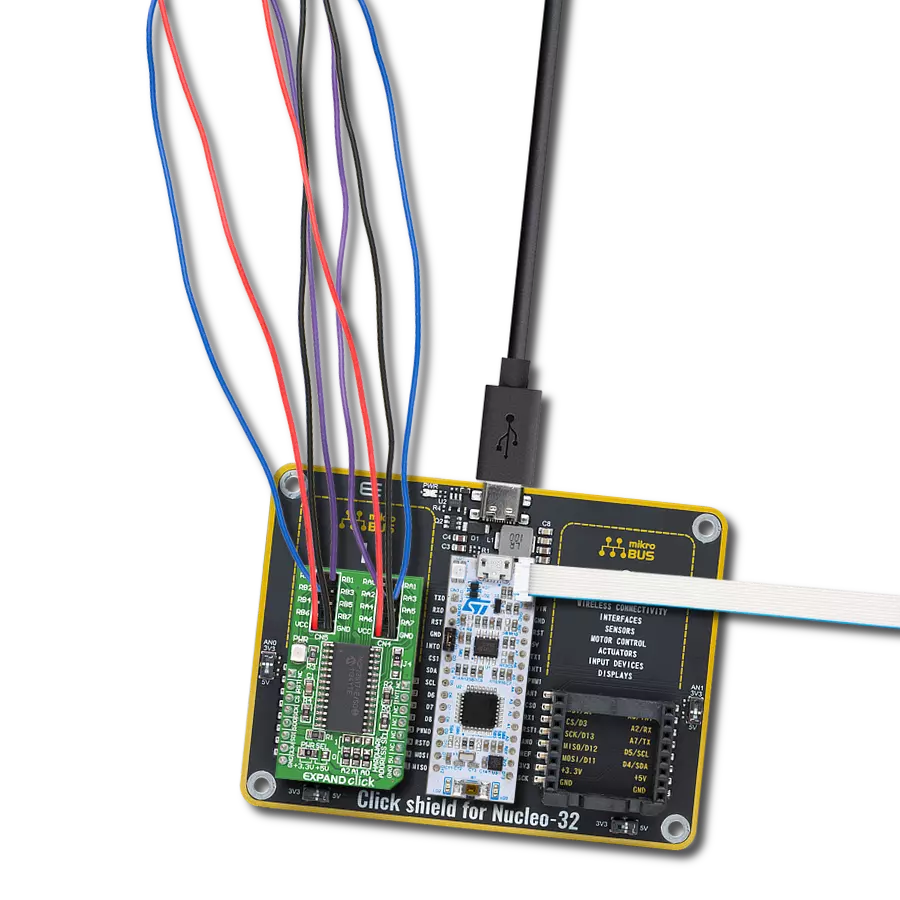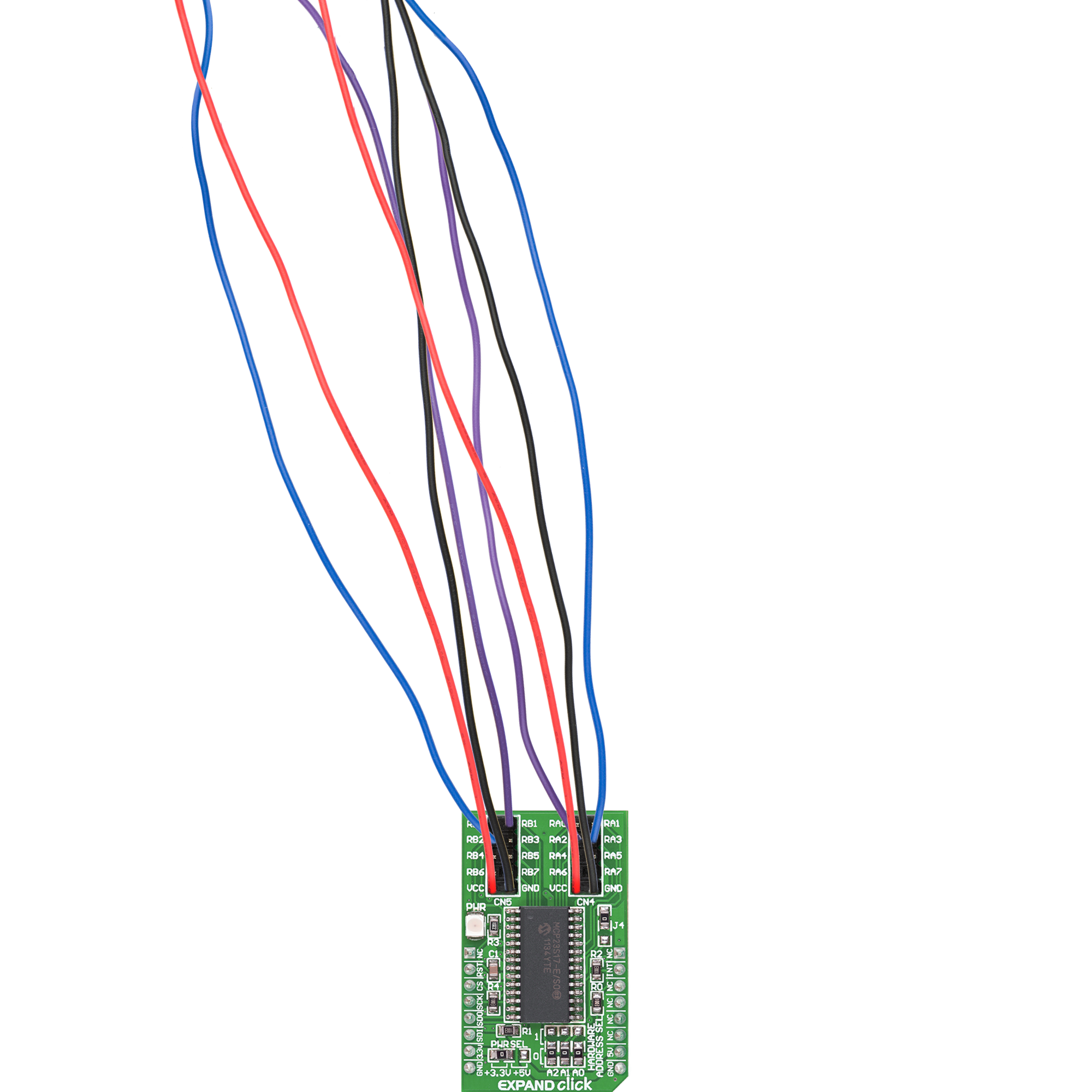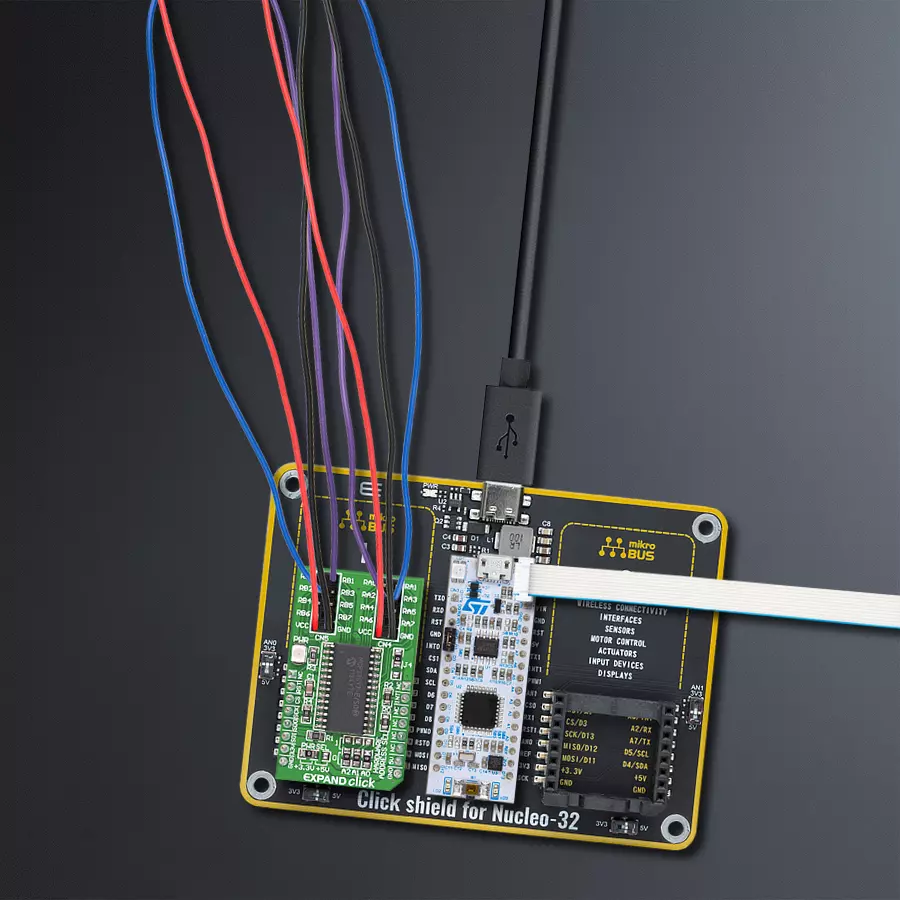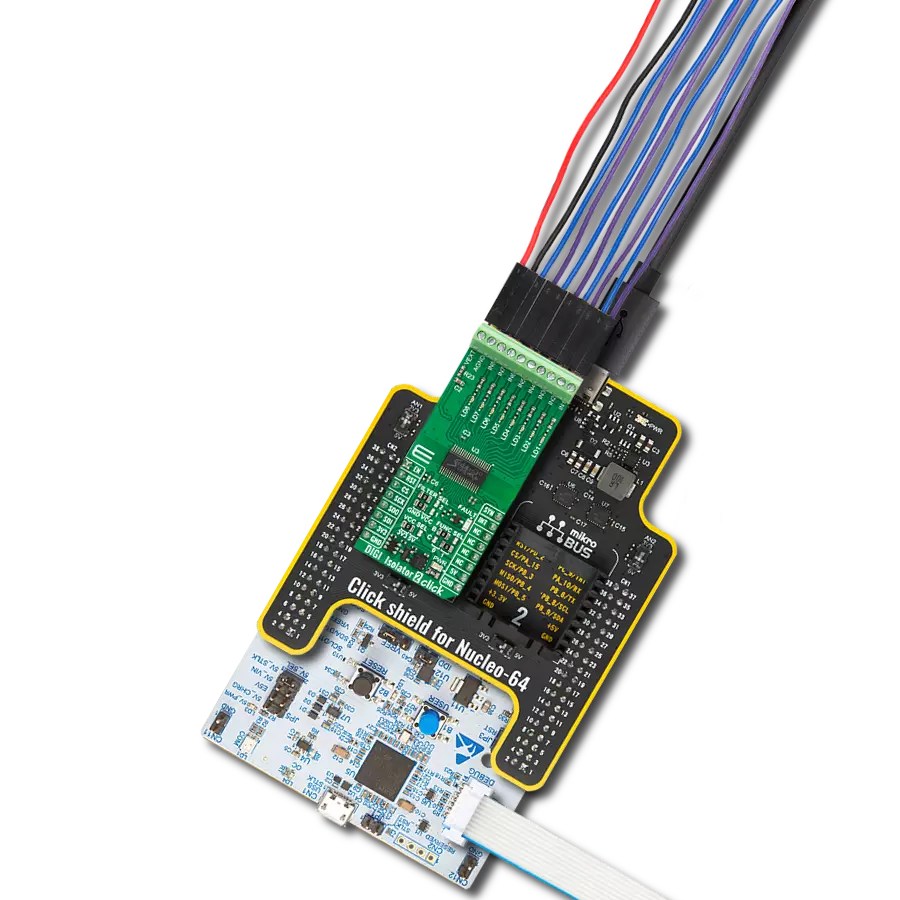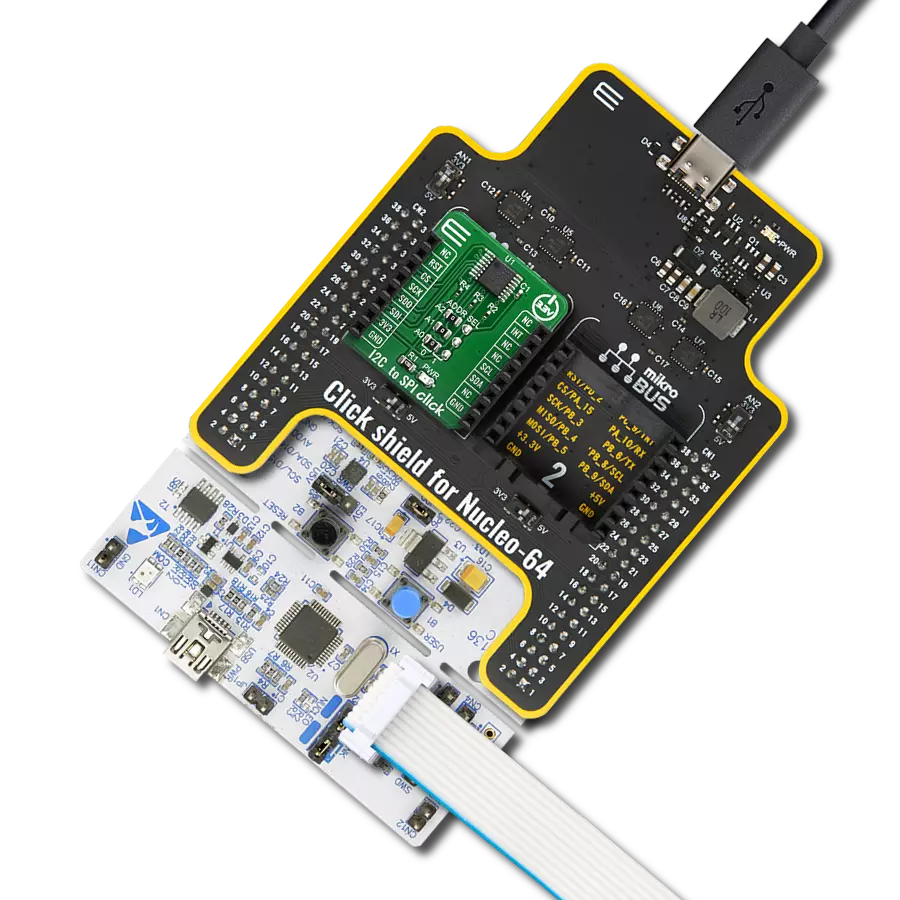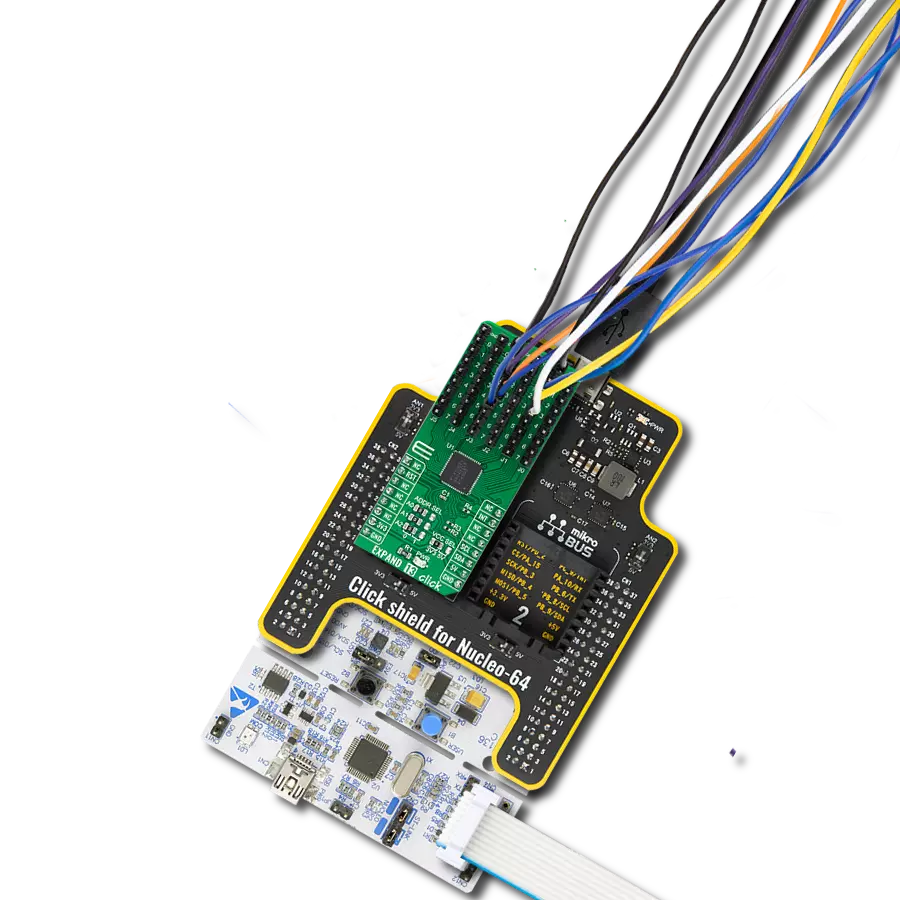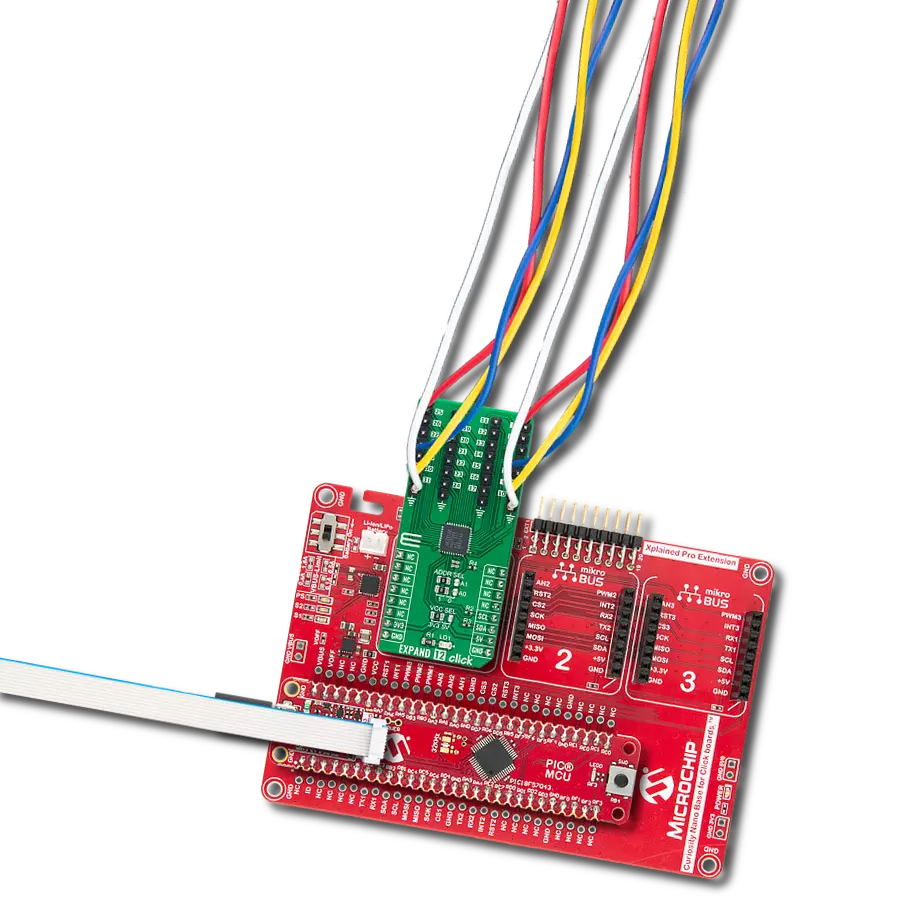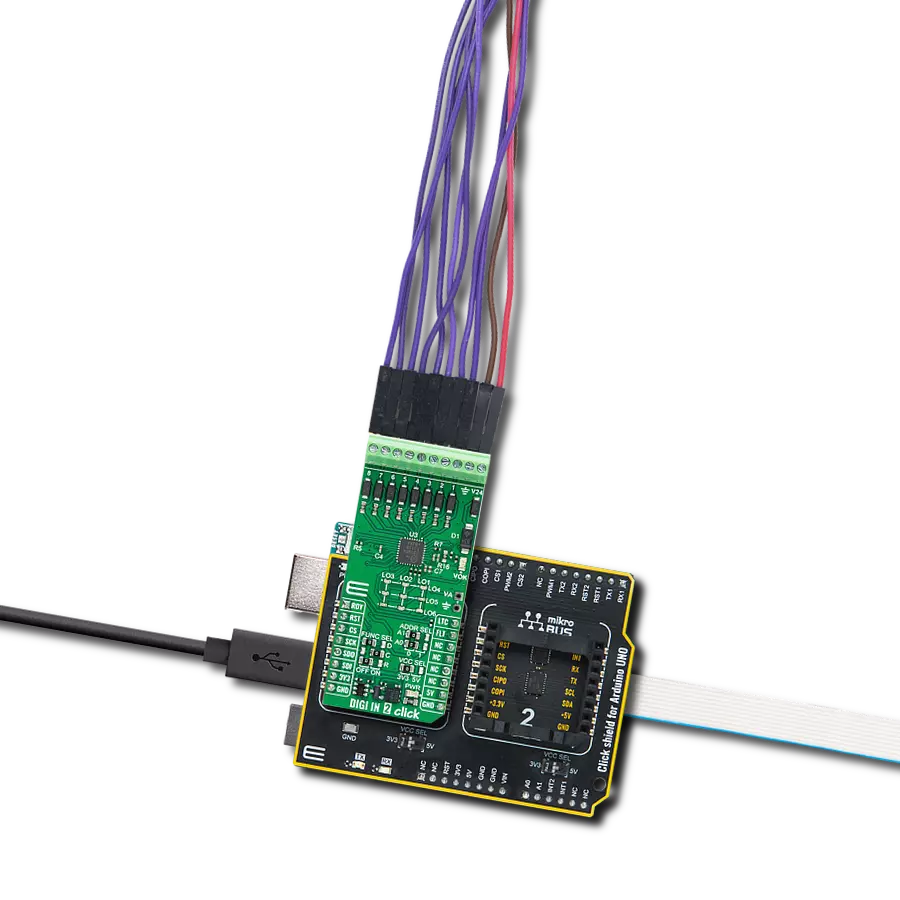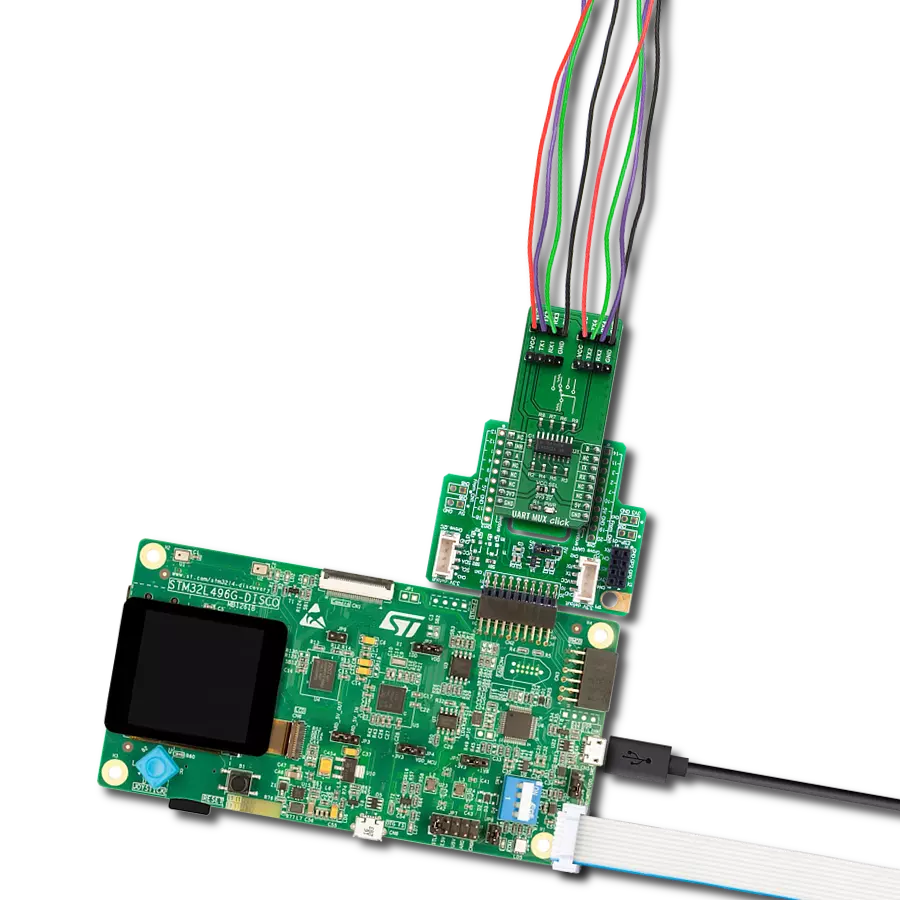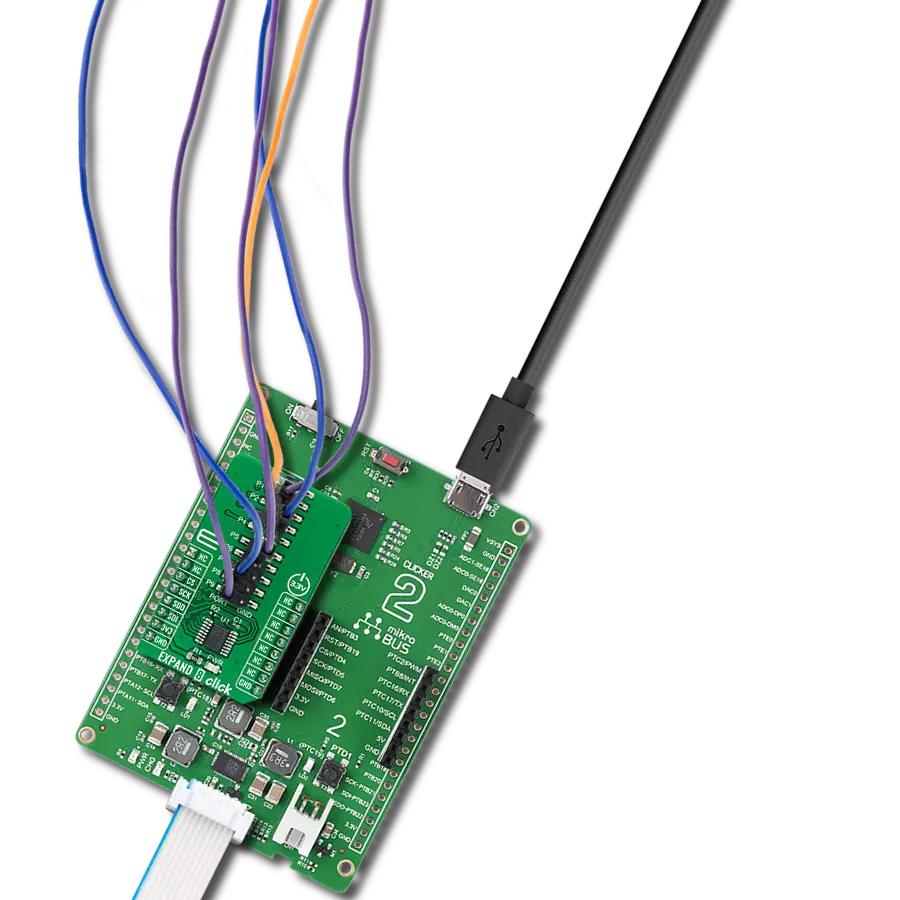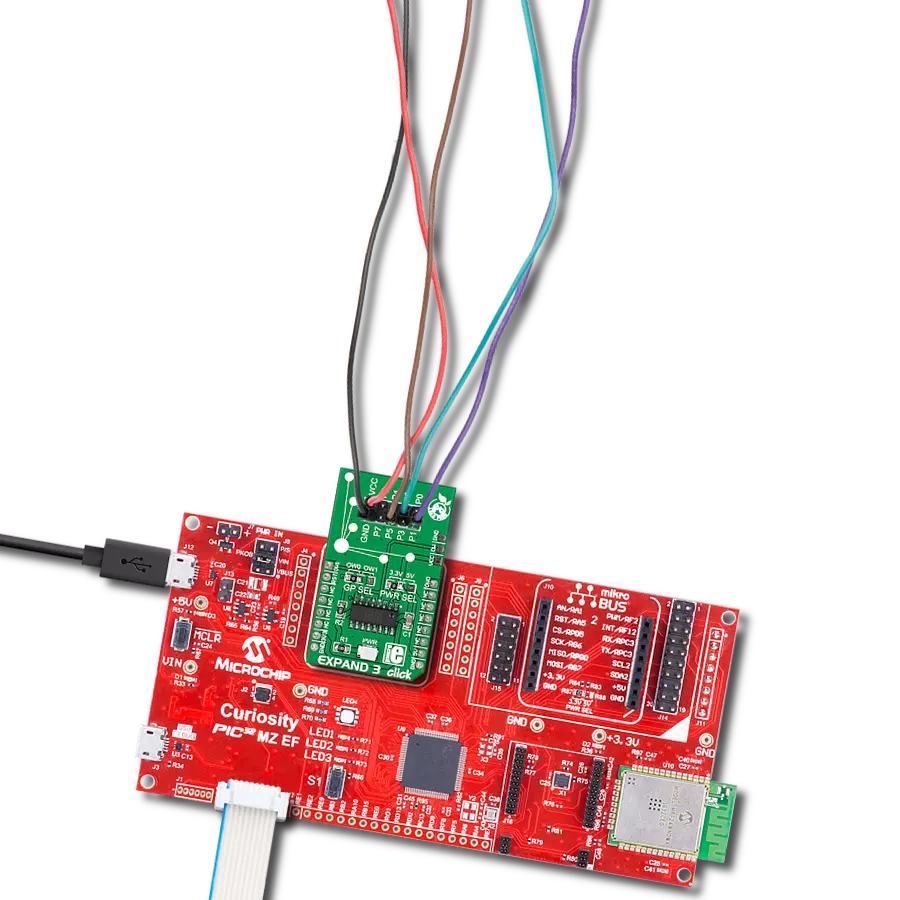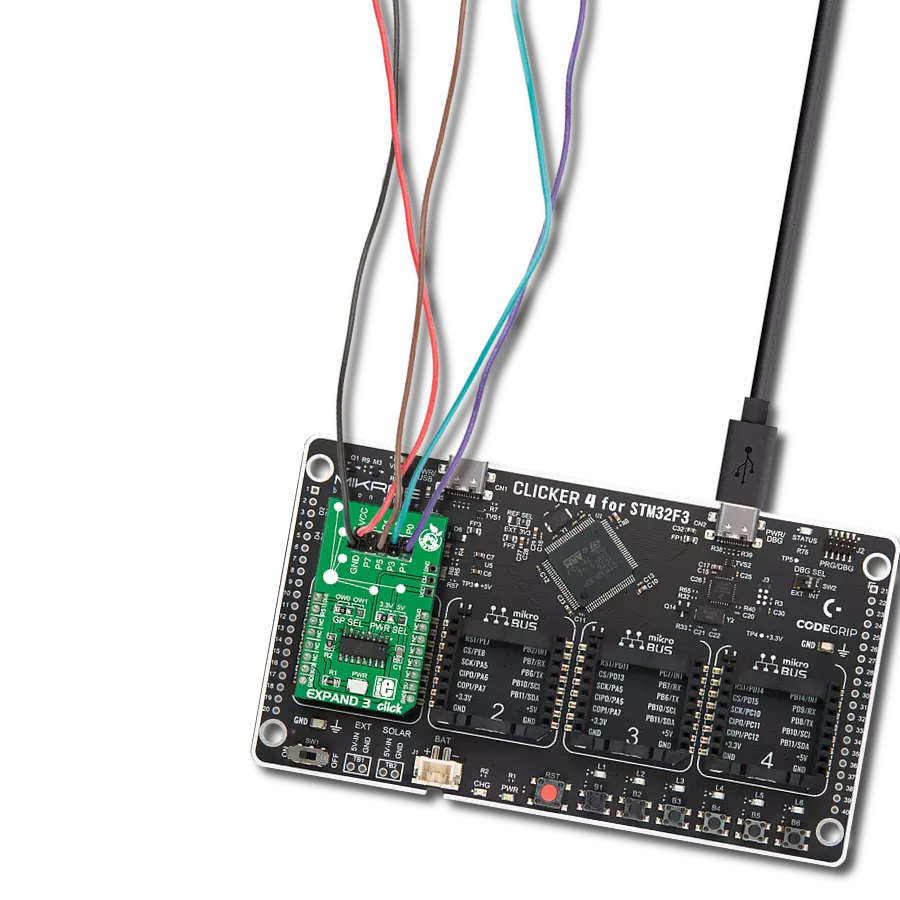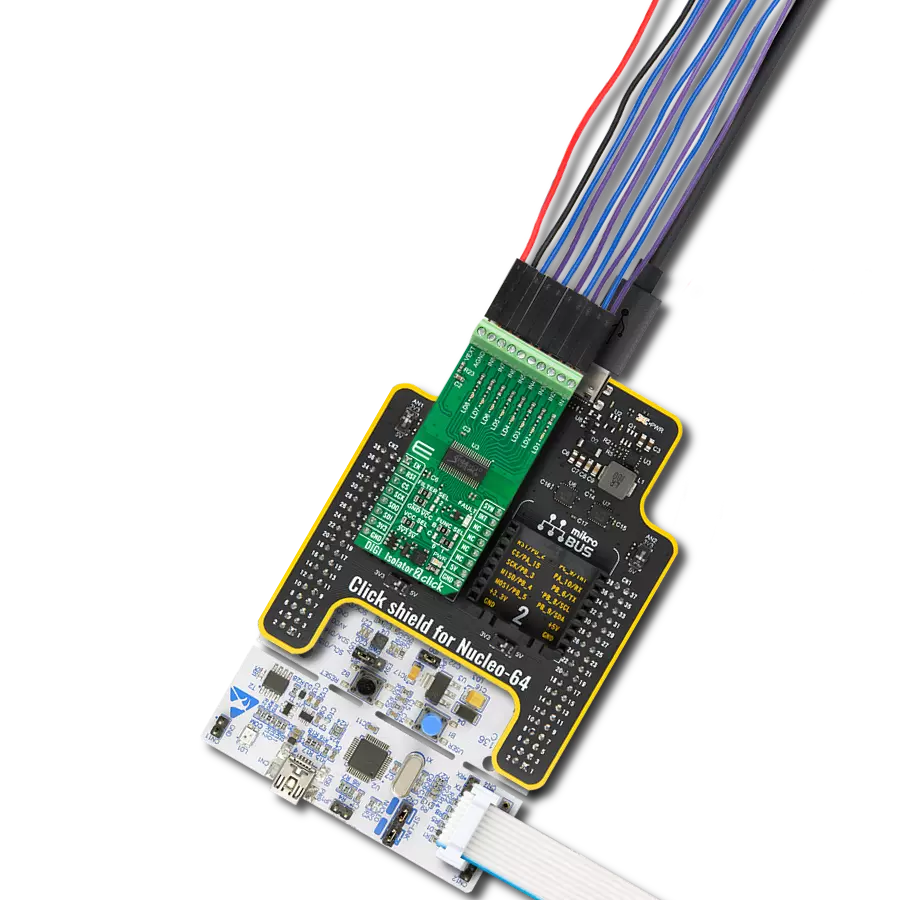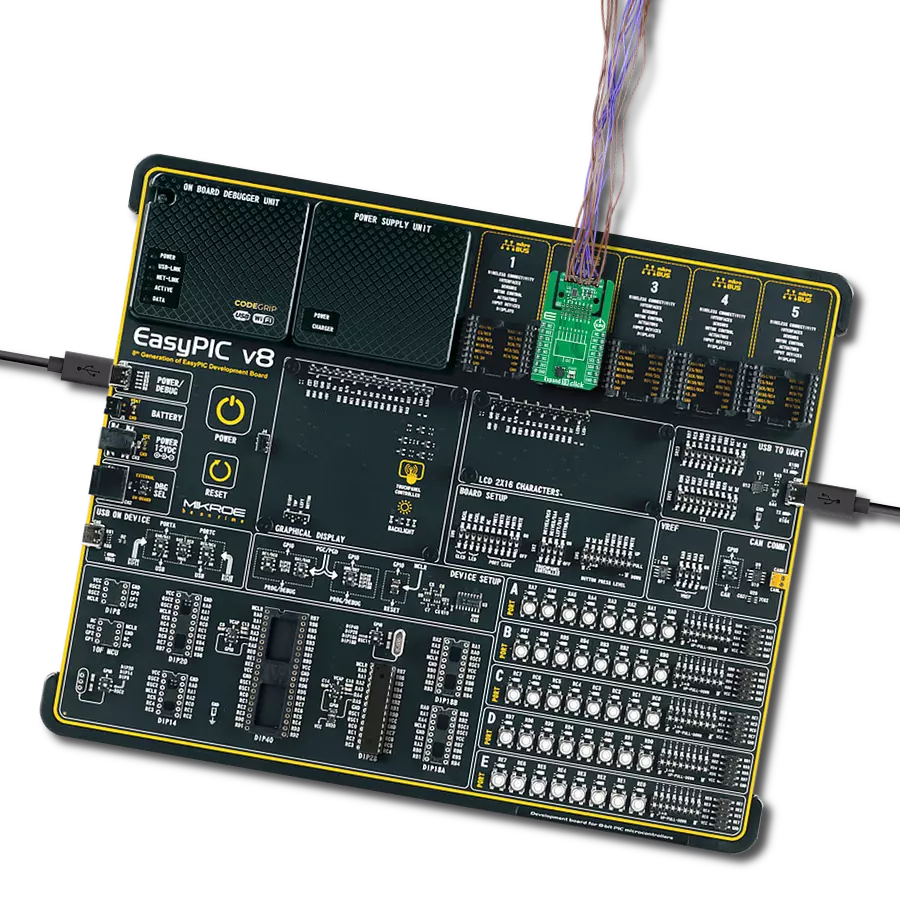Expand your project's input and output capabilities without complex wiring or hardware modifications
A
A
Hardware Overview
How does it work?
Expand Click is based on the MCP23S17, a 16-bit general-purpose parallel I/O expansion with the serial interface from Microchip. The MCP23S17 consists of multiple 8-bit configuration registers for input, output, and polarity selection. The host MCU can enable the I/Os as either inputs or outputs by writing the I/O configuration bits with data for each input or output kept in the corresponding input or output register. This port expander represents a simple solution when additional I/Os are needed while keeping interconnections to a minimum. It features two double-row unpopulated headers for connecting I/O devices. This Click board™ communicates with MCU using the standard 4-Wire
SPI serial interface with a maximum 10MHz frequency. The MCP23S17 has a 7-bit slave address with the first four MSBs fixed to 0100. The address pins A0, A1, and A2 are programmed by the user and determine the value of the last three LSBs of the slave address, which can be selected by positioning onboard SMD jumpers labeled as HARDWARE ADDRESS SEL to an appropriate position marked as 1 or 0. This way, the MCP23S17 provides the opportunity to use more Extend Clicks on a single host MCU. Besides, it also has an interrupt feature, routed to the INT pin of the mikroBUS™ socket, indicating to the host controller that an input state has been changed
alongside the general reset feature. Two interrupt pins on the MCP23S17 can be associated with their respective ports or logically OR’ed together so that both pins will activate if either port causes an interrupt. The desired interrupt port can be selected by positioning an onboard SMD jumper labeled J4 in an appropriate position. This Click board™ can operate with either 3.3V or 5V logic voltage levels selected via the PWR SEL jumper. This way, both 3.3V and 5V capable MCUs can use the communication lines properly. Also, this Click board™ comes equipped with a library containing easy-to-use functions and an example code that can be used for further development.
Features overview
Development board
Nucleo 32 with STM32F031K6 MCU board provides an affordable and flexible platform for experimenting with STM32 microcontrollers in 32-pin packages. Featuring Arduino™ Nano connectivity, it allows easy expansion with specialized shields, while being mbed-enabled for seamless integration with online resources. The
board includes an on-board ST-LINK/V2-1 debugger/programmer, supporting USB reenumeration with three interfaces: Virtual Com port, mass storage, and debug port. It offers a flexible power supply through either USB VBUS or an external source. Additionally, it includes three LEDs (LD1 for USB communication, LD2 for power,
and LD3 as a user LED) and a reset push button. The STM32 Nucleo-32 board is supported by various Integrated Development Environments (IDEs) such as IAR™, Keil®, and GCC-based IDEs like AC6 SW4STM32, making it a versatile tool for developers.
Microcontroller Overview
MCU Card / MCU

Architecture
ARM Cortex-M0
MCU Memory (KB)
32
Silicon Vendor
STMicroelectronics
Pin count
32
RAM (Bytes)
4096
You complete me!
Accessories
Click Shield for Nucleo-32 is the perfect way to expand your development board's functionalities with STM32 Nucleo-32 pinout. The Click Shield for Nucleo-32 provides two mikroBUS™ sockets to add any functionality from our ever-growing range of Click boards™. We are fully stocked with everything, from sensors and WiFi transceivers to motor control and audio amplifiers. The Click Shield for Nucleo-32 is compatible with the STM32 Nucleo-32 board, providing an affordable and flexible way for users to try out new ideas and quickly create prototypes with any STM32 microcontrollers, choosing from the various combinations of performance, power consumption, and features. The STM32 Nucleo-32 boards do not require any separate probe as they integrate the ST-LINK/V2-1 debugger/programmer and come with the STM32 comprehensive software HAL library and various packaged software examples. This development platform provides users with an effortless and common way to combine the STM32 Nucleo-32 footprint compatible board with their favorite Click boards™ in their upcoming projects.
Used MCU Pins
mikroBUS™ mapper
Take a closer look
Click board™ Schematic

Step by step
Project assembly
Software Support
Library Description
This library contains API for EXPAND Click driver.
Key functions:
expand_set_direction_port_a- Set expander PORTA direction functionexpand_write_port_a- Write one byte of data to register for PORTA functionexpand_reset- Reset function
Open Source
Code example
The complete application code and a ready-to-use project are available through the NECTO Studio Package Manager for direct installation in the NECTO Studio. The application code can also be found on the MIKROE GitHub account.
/*!
* \file
* \brief Expand Click example
*
* # Description
* This applicatioin use for expansion I/O lines.
*
* The demo application is composed of two sections :
*
* ## Application Init
* Initialization driver enable's - GPIO,
* reset MCP23S17 chip, set PORTA to be output and PORTB to be input,
* set default configuration and start write log.
*
* ## Application Task
* This is a example which demonstrates the use of Expand Click board.
* Expand Click communicates with register via SPI protocol by write and read from register,
* set configuration and state and read configuration and state.
* Results are being sent to the Usart Terminal where you can track their changes.
* All data logs on usb uart for aproximetly every 500 ms.
*
* \author MikroE Team
*
*/
// ------------------------------------------------------------------- INCLUDES
#include "board.h"
#include "log.h"
#include "expand.h"
// ------------------------------------------------------------------ VARIABLES
static expand_t expand;
static log_t logger;
static uint8_t port_status;
static uint8_t position;
static uint16_t pin_position;
void application_init ( void )
{
log_cfg_t log_cfg;
expand_cfg_t cfg;
/**
* Logger initialization.
* Default baud rate: 115200
* Default log level: LOG_LEVEL_DEBUG
* @note If USB_UART_RX and USB_UART_TX
* are defined as HAL_PIN_NC, you will
* need to define them manually for log to work.
* See @b LOG_MAP_USB_UART macro definition for detailed explanation.
*/
LOG_MAP_USB_UART( log_cfg );
log_init( &logger, &log_cfg );
log_info( &logger, "---- Application Init ----" );
// Click initialization.
expand_cfg_setup( &cfg );
EXPAND_MAP_MIKROBUS( cfg, MIKROBUS_1 );
expand_init( &expand, &cfg );
expand_default_configuration( &expand, EXPAND_SPI_MODULE_POSITION_0 );
expand_set_direction_port_a( &expand, EXPAND_SPI_MODULE_POSITION_0, EXPAND_PORT_DIRECTION_OUTPUT );
expand_set_direction_port_b( &expand, EXPAND_SPI_MODULE_POSITION_0, EXPAND_PORT_DIRECTION_INPUT );
expand_set_pull_ups_port_b( &expand, EXPAND_SPI_MODULE_POSITION_0, 0xFF );
}
void application_task ( void )
{
pin_position = 1;
for ( position = 0; position < 8; position++ )
{
expand_write_port_a( &expand, EXPAND_SPI_MODULE_POSITION_0, pin_position );
log_printf( &logger, " PA%d set\r\n", (uint16_t) position );
port_status = expand_read_port_b( &expand, EXPAND_SPI_MODULE_POSITION_0 );
log_printf( &logger, " Status PB (input) : %d \r\n", (uint16_t) port_status );
log_printf( &logger, "----------------\r\n" );
pin_position <<= 1;
Delay_ms ( 500 );
}
}
int main ( void )
{
/* Do not remove this line or clock might not be set correctly. */
#ifdef PREINIT_SUPPORTED
preinit();
#endif
application_init( );
for ( ; ; )
{
application_task( );
}
return 0;
}
// ------------------------------------------------------------------------ END
Additional Support
Resources
Category:Port expander
